


The Photoshoot:
In the photoshoot displayed above I explored…
Edited Photos Below:



The Photoshoot:
In the photoshoot displayed above I explored…
Edited Photos Below:
For many of the islands communities, the ports and piers hold symbolic as well as obvious practical significance. “They facilitate trade and communication as an islands economy grows beyond the means by which it can support itself, they come to symbolise survival and possibility”. (Reference: https://collections.societe.je/archive/books/editions-emile/edem04-victoria-and-albert-on-the-piers?)
Basque fishermen were travelling to the region to fish and by 1580, around 10,000 fishermen (European) were making the transatlantic journey to the area each year to fish for cod.
Channel Island fishermen were among these and by the 1750s they had set up profitable trade routes between Canada, Europe and America with establishing bases on the Gaspé Coast where they could salt and prepare the cod.

Jersey had many ships that carried on two separate types of trade. The biggest going to newfoundland or thereabouts in early spring or summer for cod and returning in autumn usually through Spanish or Mediterranean ports.
“In the early 1950s Jersey fishermen pioneered the Channel fishery for crab, using offshore vivier boats previously unknown outside of Brittany. Those boats went on to exploit new grounds as far north as West Scotland and the Hebrides.
Jersey merchants, with the plentiful landings of crab and lobster were able to influence European prices and help keep the island on the map. Back then the fleet used to lay up along the wall, on the mud where the St Helier marina is now sited.”
Most of the cod was sold to Mediterranean ports where there was a large demand due to the countries in the region being largely Roman Catholic and having regular ‘fish-days’ every week. Goods such as cargoes of wine, brandy, dried fruit, citrus fruit and salt were brought back from these ports, and often taken straight to some English/ Northern European port, then returning home to Jersey with a third cargo though some came straight back to the Island.
The island has gained from its constitutional relationship with Britain and the legacies of colonialism based on a slave plantation economy during the first Industrial Revolution through significant changes made due to industrialization.
The islands has it’s history intertwined with legacies of colonialism including the aspect of the slave plantation economy.
Direct impact of slave plantation made not have been as strongly marked in Jersey compared to other regions, it still influenced the development of the island.
Jersey’s constitutional relationship with Britain and the echoes of colonialism during the Industrial Revolution likely had an impact on various aspect of Jersey’s economy, identity and it’s societal structures over time.



The Photoshoot:
In the contact sheet presented above I have demonstrated another collection of photographs representing different parts of the harbour. I like these photographs I have shown a range of different elements and colours as well from the fishery materials to the different structures of the ports and boats to entering the fishery and having a close up experience with the freshness of the seafood they sell and produce to the behind the scenes and having a look at large sums of crab, scorpion and unique crayfish a worker had held to present to us.
I felt that in terms of textures and colours it was important to taking pictures of things to remind me of fishery and maritime and useful tools that potentially could be used. Such as pellets or things to be used on the boats, or any crane that I noticed or any stack or materials that I saw as well that could look interesting through a camera lens’ perspective.
In the photoshoot we had walked past the “Jersey Rowing Club” which is on the outskirts, based in the Old Lifeboat Station at the bottom of Mount Bingham, where the members enjoy a central location with excellent boat storage facilities and direct access to the water. The club dates back to the “early 1960s and was officially founded in 1971 when the sport of rowing was growing fast in the Island because of the popularity of the Sark to Jersey Rowing race, which started in 1967”.
Edited Photos Below:


The Photoshoot:
In the contact sheet above I have presented my photographs with a selection taken in the New north key, old harbour and Victoria pier where a fishing activity is mostly centred there (some photos display “English Port, the “French Port”. I like how this photoshoot has turned out as I’ve taken pictures of a range of different objects and different contrasting elements like taking pictures of a safety ring to pictures of a picture of the old harbour and how it all used to look like. Taking pictures of different textures was crucial too as it is vey prominent in those certain areas from the soft yellow sand to the rock sea walls of the marina to colourful abandoned boats.
I took photographs around the “Old Harbour” (The English Harbour and The French Harbour have berths “for over 500 motor boats and sailing yachts which generally dry out on the mud at low tide, the abandoned pub, La Folie Inn is also situated here and so is South Pier where you will find marine engineers South Pier Marina and St Helier Yacht Club”).
In terms of the Main Harbour it provides “deep water berths” for commercial vessels which is alongside the Victoria Quay and New North Quay.
On the Victoria Quay you can find fish wholesalers such as “Fresh Fish Company” and “Aquamar Fisheries”. (INSERT PHOTO)
The Albert Pier has been re-developed now from a ferry terminal to new berths for large vessels and yachts as well as renovating the pontoons in St Helier Marina.
In terms of exposure, I generally had my camera settings on manual exposure and experimented with the different aperture and different angles as both landscapes and portraits were used.
We also had a talk with Doug Ford, a Maritime Historian and former Community Learning Director at Jersey Heritage which discussed with us the history of Jersey’s maritime and other interesting aspects linking it. He took us on a tour around the Old English and French harbour presentd images he had
(Inserted photos of pictures you took of his laminated pieces sheets of layout of the marina).
Edited Photos below:
trying to turn the ordinary into the extra ordinary
photography is putting a frame around something you point a camera at
Camera Obscura
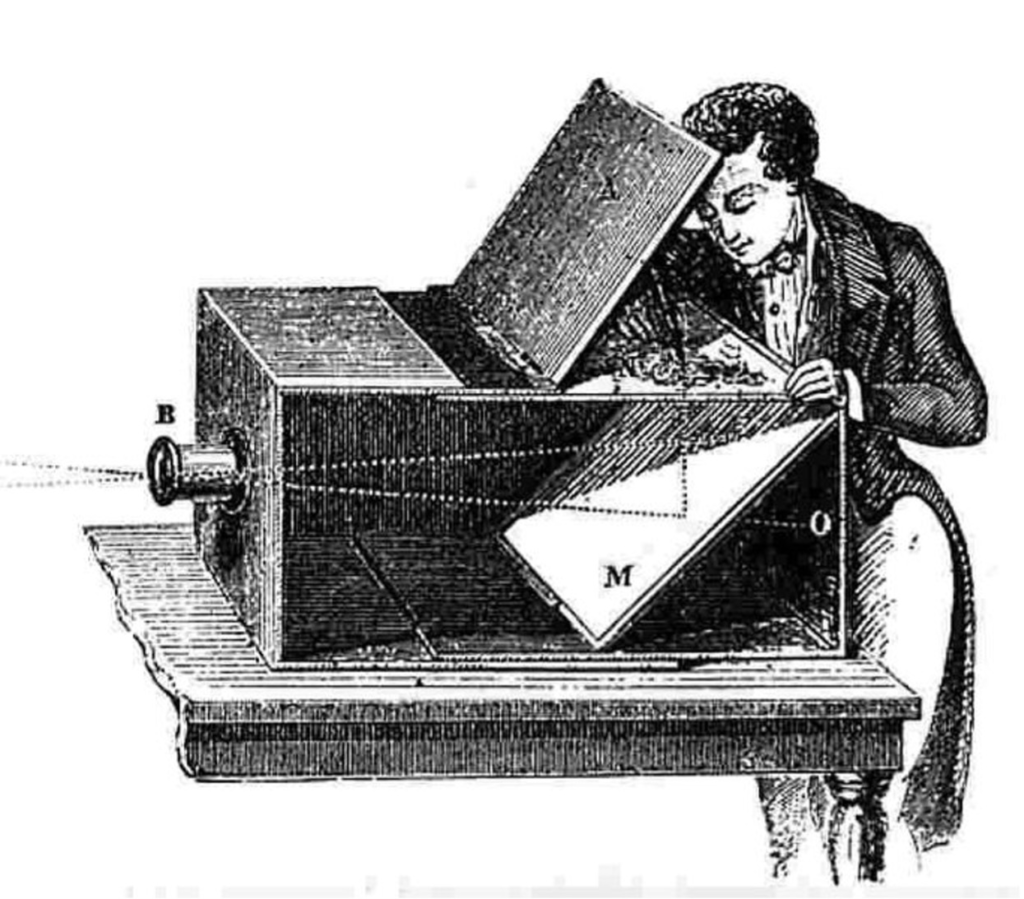
how is an image produced using Camera Obscura?
A Camera Obscura ‘dark chamber’ is a dark room or box with a small hole in one wall/side in which the rays of light from outside passing through to form an image and project a scene from outside the box onto the surface opposite to the hole, resulting in an upside down and reversed projection of the view outside.
Camera Obscuras with a lens in the opening have been used since the second half of the 16th century and became popular as aids for drawing and painting. The technology was developed further into the photographic camera in the first half of the 19th century, when camera obscura boxes were used to expose light-sensitive materials to the projected image.
The camera obscura was used to study eclipses without the risk of damaging the eyes by looking directly into the Sun. As a drawing aid, it allowed tracing the projected image to produce a highly accurate representation and was especially appreciated as an easy way to achieve proper graphical perspective.

Daguerreotype

Louis-Jacques-Mandé Daguerre was a French artist and photographer, known for his invention of the daguerreotype process of photography. He became known as one of the fathers of photography. He is most famous for his contributions to photography but he was also an accomplished painter, scenic designer, and a developer of the diorama theatre.
The daguerreotype Creates a highly detailed image on a sheet of copper plated with a thin coat of silver without the use of a negative. The process required great care. The silver-plated copper plate had first to be cleaned and polished until the surface looked like a mirror.
The daguerreotype process made it possible to capture the image seen inside a camera obscura and preserve it as an object. It was the first practical photographic process.
It was introduced worldwide in 1839, There has been a revival of the daguerreotype since the late 20th century by a small number of photographers interested in making artistic use of early photographic processes. Daguerreotype was the first publicly available photographic process, widely used during the 1840s and 1850s.

Calotype
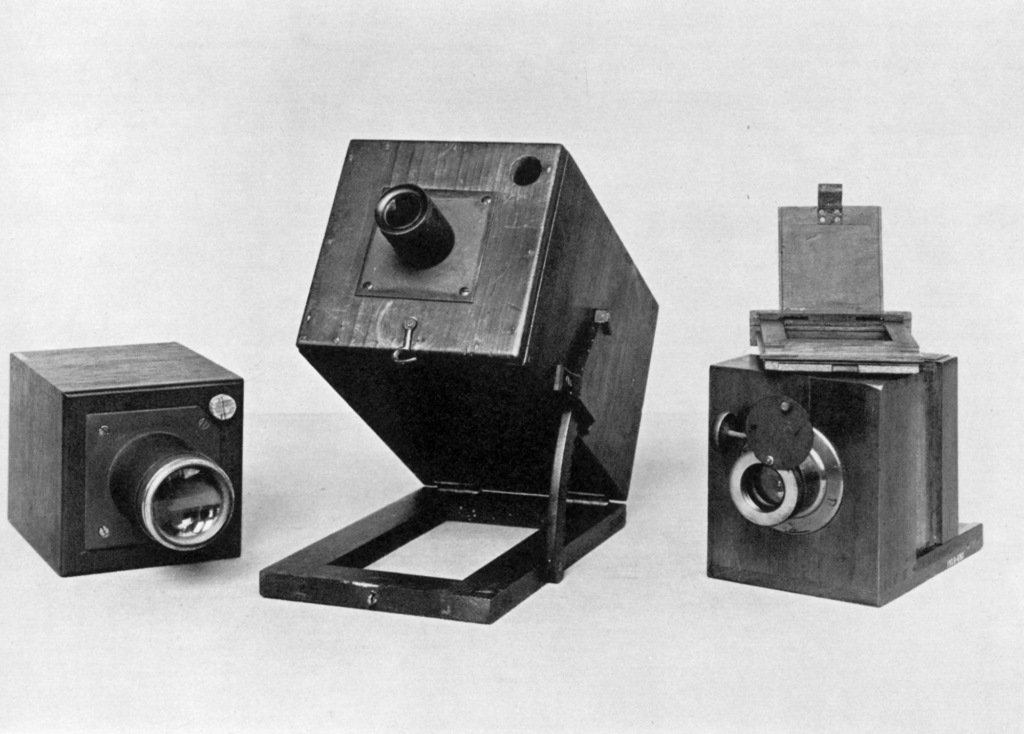
Calotype is an early photographic process introduced in 1841 by William Henry Fox Talbot using paper coated with silver iodide. Paper texture effects in calotype photography limit the ability of this early process to record low contrast details and textures.
Talbot made his first successful camera photographs in 1835 using paper sensitised with silver chloride, which darkened in proportion to its exposure to light. This early “photogenic drawing” process was a printing-out process, i.e., the paper had to be exposed in the camera until the image was fully visible. A very long exposure—typically an hour or more—was required to produce an acceptable negative.
Richard Maddox

Richard Leach Maddox was born at Bath, England, on 4 August 1816.
Long before his discovery of the dry gelatine photographic emulsion, Maddox was prominent in what was called photomicrography – photographing minute organisms under the microscope. The eminent photomicrographer of the day, Lionel S. Beale, included as a frontispiece image made by Maddox in his manual ‘How to work with the Microscope.
Maddox freely gave his discovery of the dry gelatine process to the world, saying that “I had no thought of bringing the subject into notice until it had been lifted from the cradle”. Maddox, at the initial stage of invention, could probably produce only ‘lantern slides’ contact-copied from his microscope plates, the slow speed being impracticable for camera lens images.
It was these origins that led to the miniaturization and adaptability of photographic emulsions, and consequently paved the way for social and action photography and cinematography.
The advantages of the dry plate were that photographers could use commercial dry plates off the shelf instead of having to prepare their own emulsions in a mobile darkroom. Negatives did not have to be developed immediately. Also, for the first time, cameras could be made small enough to be hand-held, or even concealed: further research created ‘fast’ exposure times, which led to snapshot photography and the Kodak camera with roll film, paving the way for cinematography.
George Eastman & Founding of Kodak
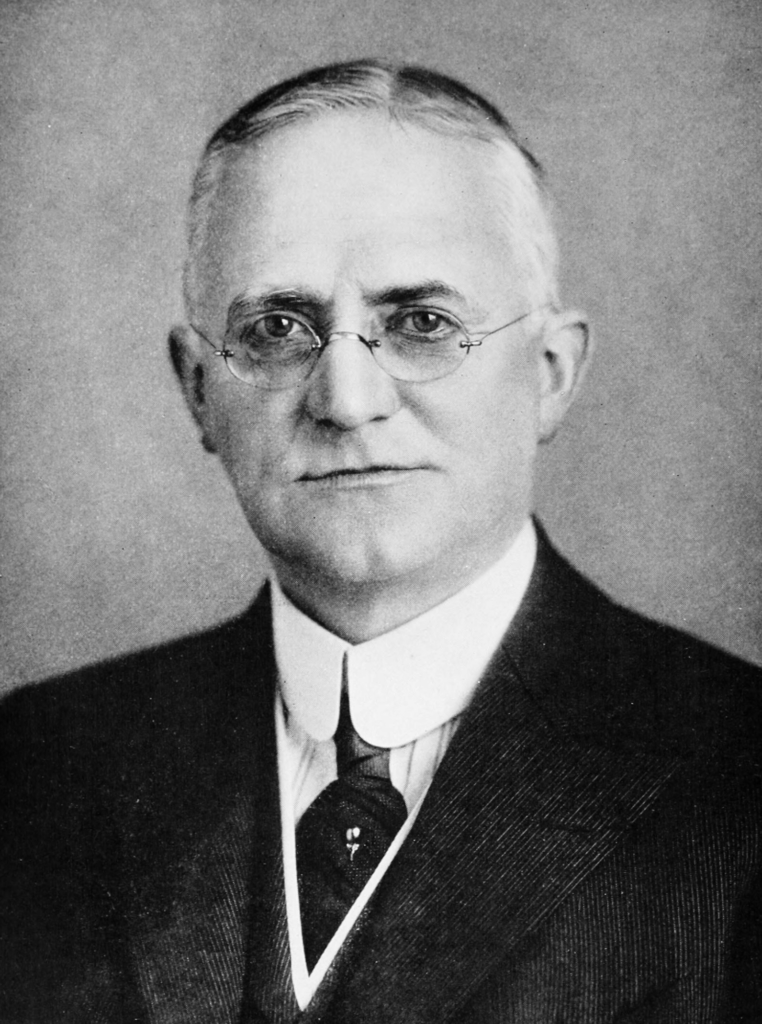
George Eastman was an American entrepreneur who founded the Eastman Kodak Company and helped to bring the photographic use of roll film into the mainstream. After a decade of experiments in photography, he patented and sold a roll film camera, making amateur photography accessible to the general public for the first time. Working as the treasurer and later president of Kodak, he oversaw the expansion of the company and the film industry.
In the 1870s, Eastman became interested in photography. After receiving lessons from George Monroe and George Selden, he developed a machine for coating dry plates in 1879. In 1881, he founded the Eastman Dry Plate Company with Henry Strong to sell plates, with Strong as company president and Eastman as treasurer, where he handled most executive functions. Around the same time, he began experiments to create a flexible film roll that could replace plates altogether. In 1885, he received a patent for a film roll, and then focused on creating a camera to use the rolls. In 1888, he patented and released the Kodak camera. It was sold loaded with enough roll film for 100 exposures. When all the exposures had been made, the photographer mailed the camera back to the Eastman company in Rochester, along with $10. The company would process the film, make a print of each exposure, load another roll of film into the camera, and send the camera and the prints to the photographer.
The separation of photo-taking from the difficult process of film development was novel and made photography more accessible to amateurs than ever before, and the camera was immediately popular with the public. By August 1888, Eastman was struggling to meet orders, and he and his employees soon had several other cameras in development. The rapidly growing Eastman Dry Plate Company was reorganized as the Eastman Company In 1889, and then incorporated as Eastman Kodak in 1892.
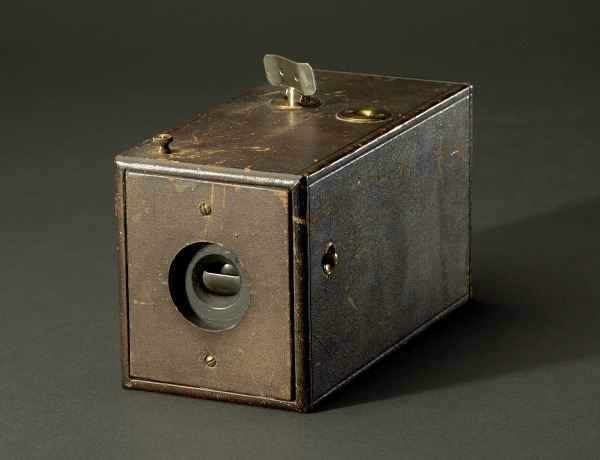
Digital Photography

Digital photography is a process that uses an electronic device called a digital camera to capture an image. Instead of film, it uses an electronic digital sensor to translate light into electrical signals. In the camera, the signals are stored as tiny bits of data in bitmaps, tiny bits of data that form the image.
While digital photography has only relatively recently become mainstream, the late 20th century saw many small developments leading to its creation. The history of digital photography began in the 1950s. In 1951, the first digital signals were saved to magnetic tape via the first video tape recorder. Six years later, in 1957, the first digital image was produced through a computer by Russell Kirsch.
The first consumer digital cameras were marketed in the late 1990s. Professionals gravitated to digital slowly, converting as their professional work required using digital files to fulfil demands for faster turnaround than conventional methods could allow. around the year 2000, digital cameras were incorporated into phones. In the following years, phone cameras became widespread, particularly due to their connectivity to social media and email.
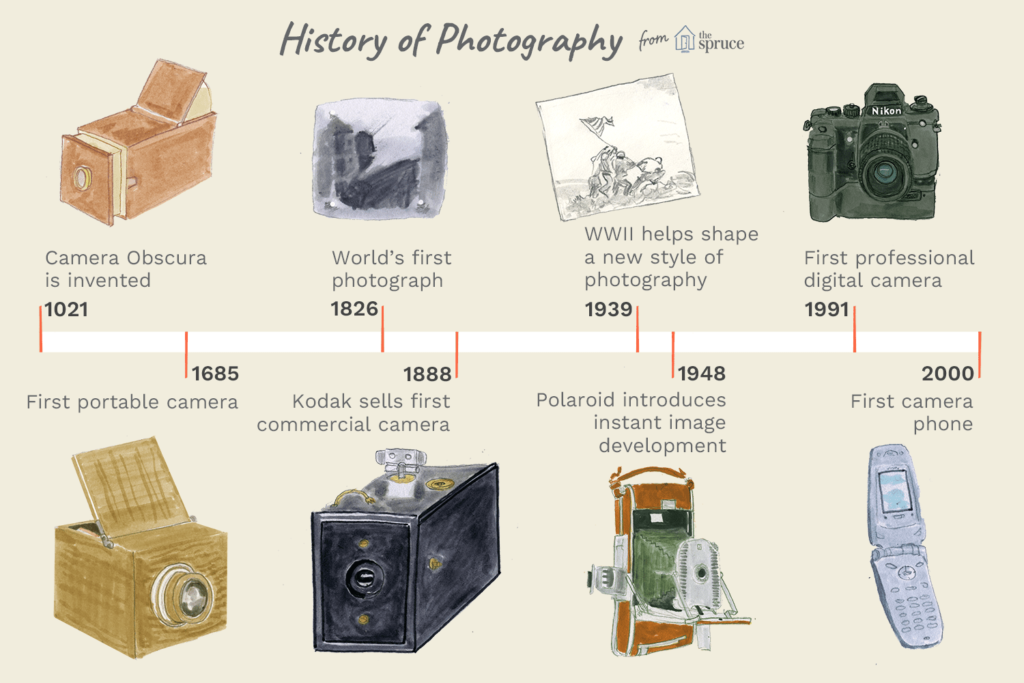

For this photoshoot, I went to the Maritime Museum which displays many pieces and facts about Jersey’s maritime history which I took photos of. I then walked around the old harbours and to Victoria pier taking photographs of the old and new parts.
If I were to redo this photoshoot, I would capture more, better images of the artefacts and things inside of the maritime museum. Although I did try to take images of these things, they didn’t turn out as well as I would have hoped and I would’ve liked to incorporate them alongside the images of the boats, harbours, piers etc.
Edits:
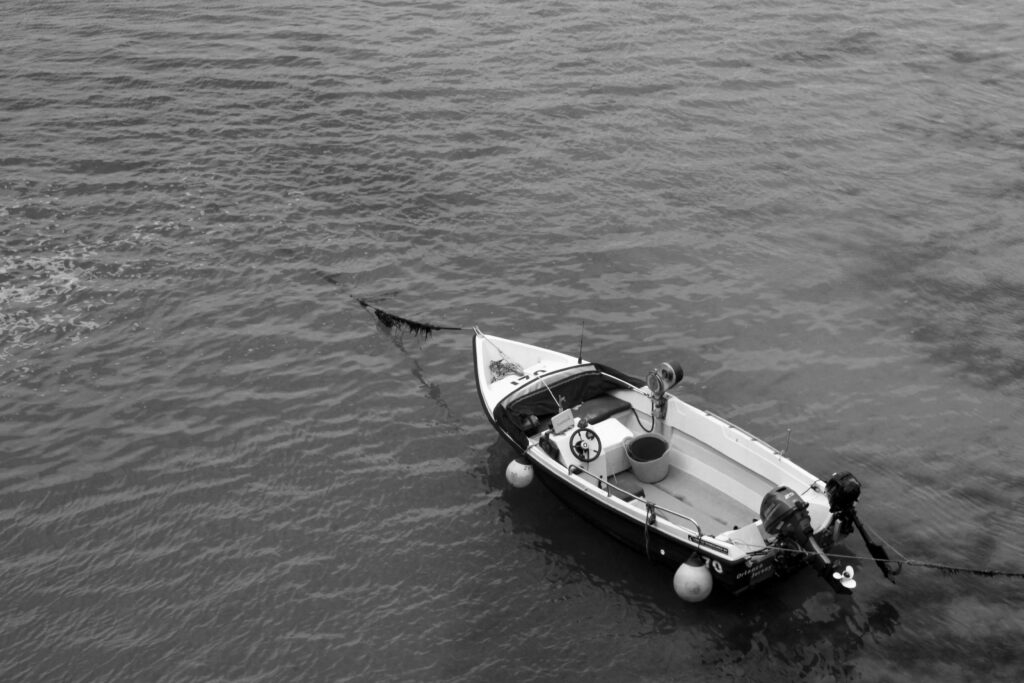











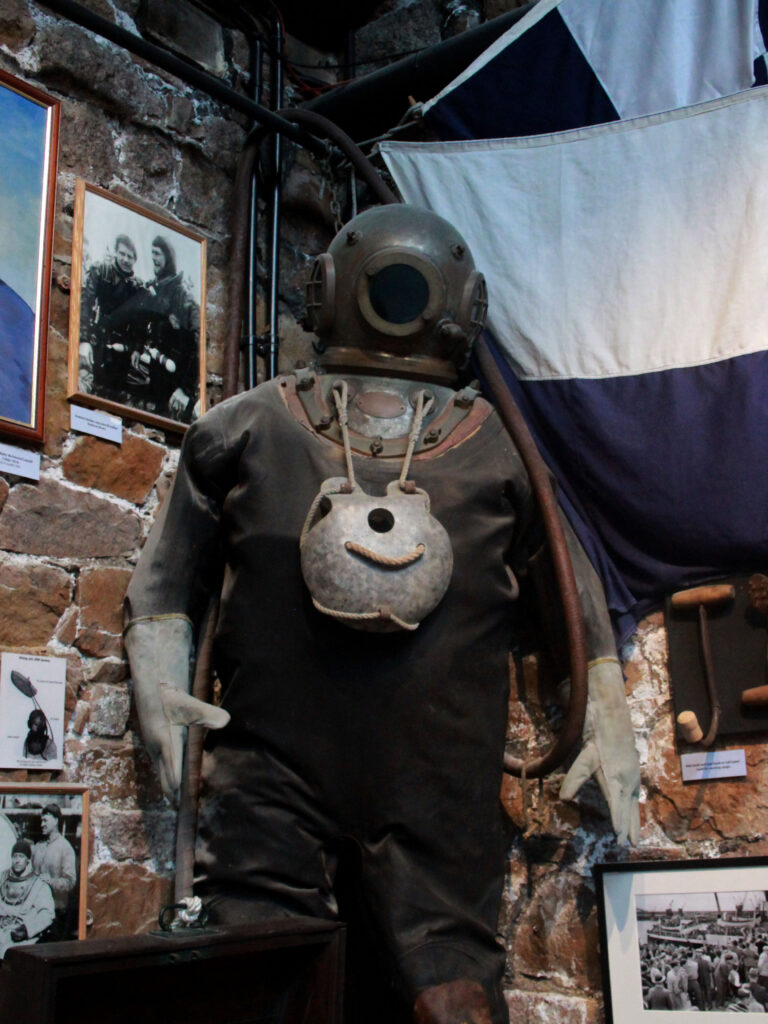
Photographers try to Turn the ordinary to something extra ordinary when taking photoshoots.
FIXING THE SHADOWS
Photography was described as “fixing a shadow” before the advent of digital tools. A chemical combination used in the final steps of processing an image onto paper stabilized or “fixed” the image, neutralizing its sensitivity to light.
ABERLARDO MORELL
Abelardo Morell (born 1948, Havana, Cuba) is a contemporary artist widely known for turning rooms into camera obscuras and then capturing the marriage of interior and exterior in large format photographs. Morell began his camera obscura series in 1991. Transforming entire rooms into cameras by covering the windows and inserting a small hole, he photographed the outside world as projected onto various interiors. Morell is famous in the photography world for producing camera obscura images in different locations globally and capturing them. Morell received the Cintas Foundation fellowship in 1992 and the John Simon Guggenheim Memorial Foundation Fellowship in 1993. In 2011, he was also honoured with the Infinity Award from the International Center of Photography.



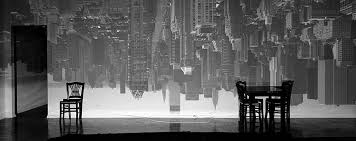
CAMERA OBSCURA
Describe how an image is produced using Camera Obscura?
They are simply a lightproof box or room with a hole in one side. Light from the sun reflects off objects outside the camera obscura and passes through the hole and lights up the surfaces inside the room with an upside down but clear image of the outside view.


Examining eclipses without having to look directly at the Sun was done with the camera obscura. As a drawing aid, it allowed the tracing of the projected image to produce a highly accurate representation, and was especially appreciated as an easy way to achieve proper graphical perspective. A camera obscura with a very small hole is sometimes referred to as a pinhole camera, although this more often refers to simple (homemade) lens less cameras.
PINHOLE

What is the principle of pinhole camera?
The camera obscura is frequently referred to as the pinhole camera principle. Pinhole cameras operate based on the concept of rectilinear light motion, which explains that light moves in straight paths. The reason for the inverted image produced by a pinhole camera is the direct path of the light. Many centuries ago, humans found out that by directing light through a narrow opening, a reversed depiction of the surrounding environment is cast onto the opposite end of the opening. Pinhole photography is essentially a miniature version of this concept, where a small aperture captures and projects images onto film.
What is special about pinhole camera?
The pinhole camera is the simplest kind of camera. It does not have a lens. It just makes use of a tiny opening (a pinhole-sized opening) to focus all light rays within the smallest possible area to obtain an image, as clearly as possible. The simple image formed using a pinhole camera is always inverted.
NICEPHORE NIEPCE

Nicéphore Niépce (born March 7, 1765, Chalon-sur-Saône, France—died July 5, 1833, Chalon-sur-Saône) was a French inventor who was the first to make a permanent photographic image. Niépce conducted photographic experiments with the goal of meeting the increasing demand for inexpensive pictures by copying prints and capturing real-life scenes in the camera. In 1816, he created temporary camera images, which he referred to as points de vue, at his family property in the nearby village of Saint-Loup-de-Varennes. During the following ten years, he experimented with various chemicals, materials, and methods in order to improve the process that he later named héliographie, meaning ‘sun writing.’
What was Joseph Nicéphore Niépce development of photography?
Niépce named his technique heliography, deriving from the Greek word helios which means ‘creating images using sunlight’. In 1826, Niépce utilized this method to capture the oldest surviving ‘photograph’ depicting a scene outside his Chalons-sur-Saône home, with an exposure lasting approximately 8 hours.
HELIOGRAPHY


What does heliography mean?
An old method of photography, héliographie, creates photoengravings on metal plates coated with asphalt. In general, it is considered a form of photography.
Heliography, from the Greek words helios (meaning “sun”) and graphein (meaning “writing”), was introduced by Joseph Nicéphore Niépce around 1822. This process was used to create the first surviving photograph from nature, View from the Window at Le Gras (1826 or 1827), and was also the first instance of using photoresist to reproduce artworks by inventing photolithography and photogravure. Niépce created the heliograph by mixing light-sensitive bitumen with oil of lavender and spreading a thin layer on a polished pewter plate. He placed the plate inside a camera obscura and placed it close to a window in his upper-level work space. After being in the sun for days, the plate showed a representation of the courtyard, outbuildings, and trees. In December 1827, Niépce admitted in his writing that his process needed enhancements but saw it as “the initial uncertain move towards a brand new path.”
LOUIS DAGUERRE
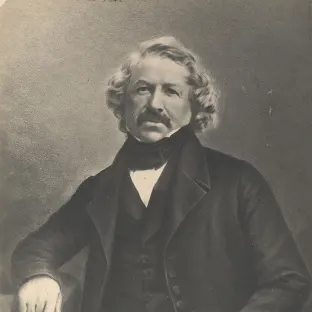
Louis-Jacques-Mandé Daguerre was a French artist and photographer known for creating the daguerreotype process of photography. He gained recognition as one of the founding figures of photography. While he is primarily known for his achievements in photography, he also excelled in painting, creating scenic designs, and innovating the diorama theatre. Louis Daguerre’s birthplace was in Cormeilles-en-Parisis, Val-d’Oise. He learned architecture, theatre design, and panoramic painting from Pierre Prévost, the pioneer French panorama painter, during his apprenticeship. Extremely skilled in the art of theatrical illusion, he gained fame as a theatre designer and went on to create the diorama, which premiered in Paris in July 1822.
How did Louis Daguerre change the world?
The invention of the daguerreotype allowed for the image produced by a camera obscura to be recorded and saved as a physical item. It was the initial usable method for taking pictures and brought in a fresh era of visual potential. Louis Jacques Mandé Daguerre (1787–1851) invented the process in 1837.
DAGUERREOTYPE

The daguerreotype is a method that produces a detailed image on a copper sheet covered in a thin layer of silver, without needing a negative. The procedure necessitated immense caution. The copper plate coated with silver had to be thoroughly cleaned and polished to achieve a reflective surface.
Why is daguerreotype so important?
The daguerreotype technique allowed for the reproduction of images from a camera obscura and their conservation as physical objects. It was the initial functional method of photography and marked the beginning of a fresh era of visual potential.
How do you tell if a photo is a daguerreotype?
Daguerreotypes can be recognized by their mirror-like, well-polished silver surface and their dual negative/positive appearance when seen from various angles or under raking light. Daguerreotypes are commonly stored in small cases with hinges, which are constructed from wood and wrapped in leather, paper, fabric, or mother of pearl. Unlike photographic paper, a daguerreotype is rigid and heavy. The daguerreotype is precise, intricate, and focused. It possesses a reflective exterior and is extremely delicate. Because of its high susceptibility to damage, most daguerreotypes are displayed in a protective casing.
HENRY FOX TALBOT
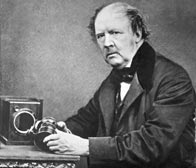
William Henry Fox Talbot was an English scientist and inventor known for creating the salted paper and calotype processes, which were early forms of photography used in the 19th and 20th centuries. His research in the 1840s paved the way for the development of the photoglyphic engraving technique, which eventually evolved into photogravure. He owned a contentious patent that influenced the initial growth of commercial photography in Britain. He was a recognized photographer who also played a role in the advancement of photography as an art form. He released The Pencil of Nature (1844–1846), featuring unique salted paper prints from his calotype negatives, and captured noteworthy early images of Oxford, Paris, Reading, and York. Talbot developed a method for producing moderately light-resistant and long-lasting photographs that was the first one accessible to the general public; nevertheless, it was not the initial process of its kind invented or publicly disclosed.
CALOTYPE

What is a calotype in photography?
The process designed by William Henry Fox Talbot, known as calotype or “Talbotype,” involves both negative and positive stages. This technique involves creating a print with a paper negative that results in a softer and less crisp image compared to the daguerreotype. However, the advantage lies in the ability to produce multiple copies due to the negative.
How long does a calotype take?
Under near-total darkness, the sensitive calotype paper was loaded in the camera. It was exposed to the scene, sometimes for as little as ten seconds, usually for a time closer to a minute, and sometimes for tens of minutes.

ROBERT CORNELIUS

Robert Cornelius, born on March 1, 1809, was an American photographer who was a trailblazer in the development of photography. His self-portrait captured via daguerreotype in 1839 is widely acknowledged as the earliest photographic portrait of an individual in the United States, marking a significant milestone in the realm of self-portraiture. Between 1840 and 1842, he ran some of the first photography studios in the US and introduced new methods to greatly decrease the time needed for portrait exposures. He was a creator, entrepreneur, and producer of lamps. In 1843, he invented and obtained a patent for the “solar lamp”, which provided a brighter light and enabled the use of less costly lard instead of the pricier whale oil as fuel.
What is Robert Cornelius best known for?
Between 1840 and 1842, he ran some of the first photography studios in the United States, introducing new methods that greatly decreased the time needed for portrait exposure. Philadelphia, Pennsylvania, U.S. He was an inventor, businessman, and maker of lamps.
SELF-PORTRAITURE
The study of self-portraits, known as self-portraiture or autoportraiture, focuses on the history, methods, distribution, reception, styles, and interpretations of self-portraits. Originating in Antiquity and gaining popularity during the Renaissance, self-portraiture is a growing field of study despite being relatively new.
Ana Peraica discussed the topic of self-portraiture today, focusing on the increase in the creation of self-portraits, especially selfies. Self-portraiture extends beyond the realm of just visual arts. Research comes from different fields, like Philosophy. The growth of language is ever-changing and factual. For instance, the word selfie was only coined in the 1980s.
Who took the first selfie?
In 1839, Robert Cornelius, a photographer from America, captured a daguerreotype of his own image. Captured a couple of years post the introduction of the daguerreotype and shortly after Daguerre unveiled his invention to the public, the picture is believed to be the earliest self-portrait and one of the initial photos of an individual.
JULIA MARGARET CAMERON

Julia Margaret Cameron, born Julia Pattle on June 11, 1815, was an influential English photographer known for her portraits in the 19th century. She is recognized for her blurred close-up images of well-known Victorians and for illustrative depictions of characters from mythology, Christianity, and literature. Originally from Calcutta, she first gained a foothold within the Anglo-Indian high society before relocating to London, where she networked with the cultural elite. After that, she established her own literary gathering in the coastal town of Freshwater, Isle of Wight. Cameron started doing photography when she was 48 years old, following a gift of a camera from her daughter. Swiftly, she generated a plethora of portraits and crafted symbolic pictures influenced by tableaux vivants, theater, 15th-century Italian artists, and modern creators. She collected a large portion of her work in albums, one of which was The Norman Album. Over a span of 12 years, she captured approximately 900 photos. Cameron’s work sparked controversy during her era. Critics criticized her gentle, blurred images, deeming her illustrative photos amateurish. Nonetheless, her depictions of figures like Henry Taylor, Charles Darwin, and Sir John Herschel have received consistent acclaim. Her pictures have been praised as “exceptionally strong” and “completely unique”, and she has been recognized for creating the initial close-up shots in the field.
What was Julia Margaret Cameron criticized for?
Cameron frequently received criticism from the photographic community in her time due to her perceived lack of skill: some of her photographs were blurry, her plates occasionally had cracks, and her fingerprints were frequently seen.
PICTORIALISM

Pictorialism was a global style and aesthetic movement that was prevalent in photography in the late 19th and early 20th centuries. The term doesn’t have a universal definition, but generally it describes a style where the photographer alters a regular photo to create an image instead of just capturing it. Usually, a visual image seems to have a blurry focus, is produced in colors other than black-and-white, and may display brush strokes or surface alterations. To the pictorialist, a photograph was a means of conveying emotional intent to the viewer, much like a painting, drawing, or engraving.
Pictorialism flourished from around 1885 to 1915, with certain individuals advocating for it until the 1940s. It started as a reaction to the idea that a photo was just a basic reflection of reality, and evolved into a movement to elevate the recognition of all photography as a genuine form of art. Painters, photographers, and art critics have been discussing conflicting artistic philosophies for over thirty years, leading to the purchase of photographs by numerous prominent art museums. Pictorialism lost its popularity slowly after 1920, but it remained popular until the conclusion of World War II. In this era, the trend of Modernist photography became popular, and people became more interested in highly detailed images like those found in Ansel Adams’ work. Many influential photographers from the 20th century started out using a pictorialist approach but shifted to more defined, focused photography by the 1930s.
HENRY MULLINS

Henry Mullins was the most productive among the initial Jersey photographers in the mid-1800s. Between 1848 and 1873, he created numerous portraits of locals at his thriving studio in the prestigious Royal Square, St Helier. As a professional photographer, he always welcomed the fast technological advancements that coincided with his career. Despite the establishment of several photography studios in St Helier during the 1850s and 1860s, Henry Mullins remained the preferred photographer for prominent individuals in Jersey society and prosperous local and immigrant families. Mullins’s work quality matched his productivity level, as demonstrated by the detailed portraits of Victorian islanders found in his photo albums.
CARTE-DE-VISIT
Carte-de-visite was originally a visiting card, particularly one adorned with a photographic portrait. Highly favored during the mid-1800s, the carte-de-visite was promoted by Parisian portrait photographer André-Adolphe-Eugène Disdéri, who patented the technique in 1854. Disdéri employed a camera with four lenses, producing eight negatives measuring 3.5 × 2.5 inches (8.89 × 6.35 cm) on a single plate. The big print created from the plate was divided into small portraits and each one was individually placed on cards sized around 4 × 3 inches (10 × 7.6 cm). These cards were cost-effective compared to other portrait options, as they allowed for eight different poses in one session and needed no editing.
EDIT 1:

This photo I chose to edit is of the Jersey Steam clock which is a full size replica of the centre section of a paddle steamboat named Ariadne. The clock was commissioned by the Jersey Waterfront Board in 1996, and built by Smith of Derby group. It was built to symbolise the islands maritime history. The original photo is good however I wanted to make it black and white.

Before and after edits:




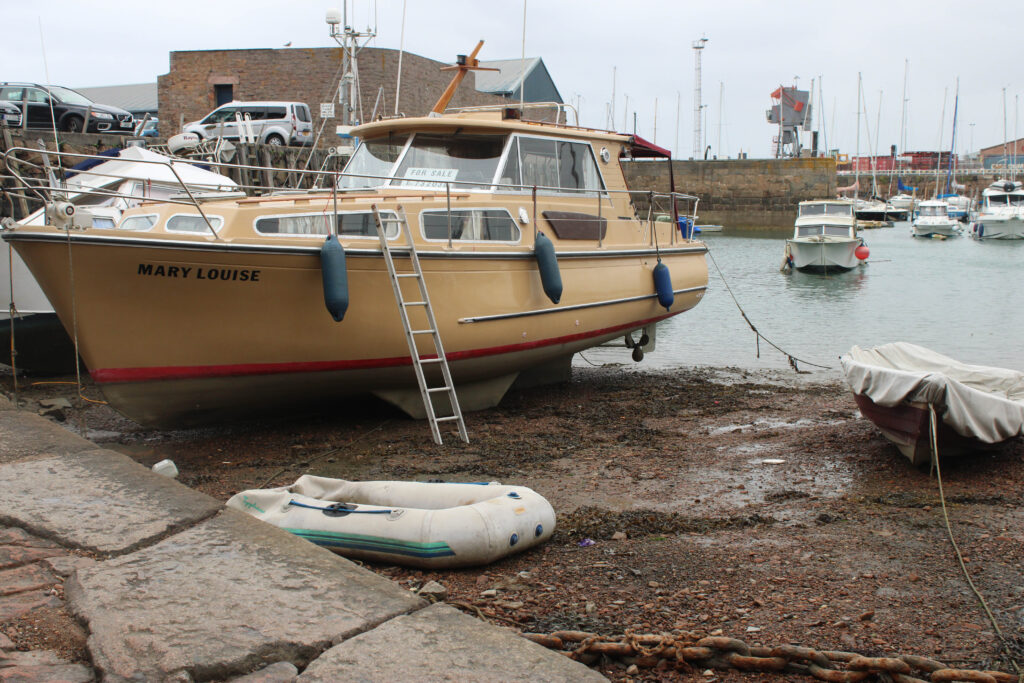




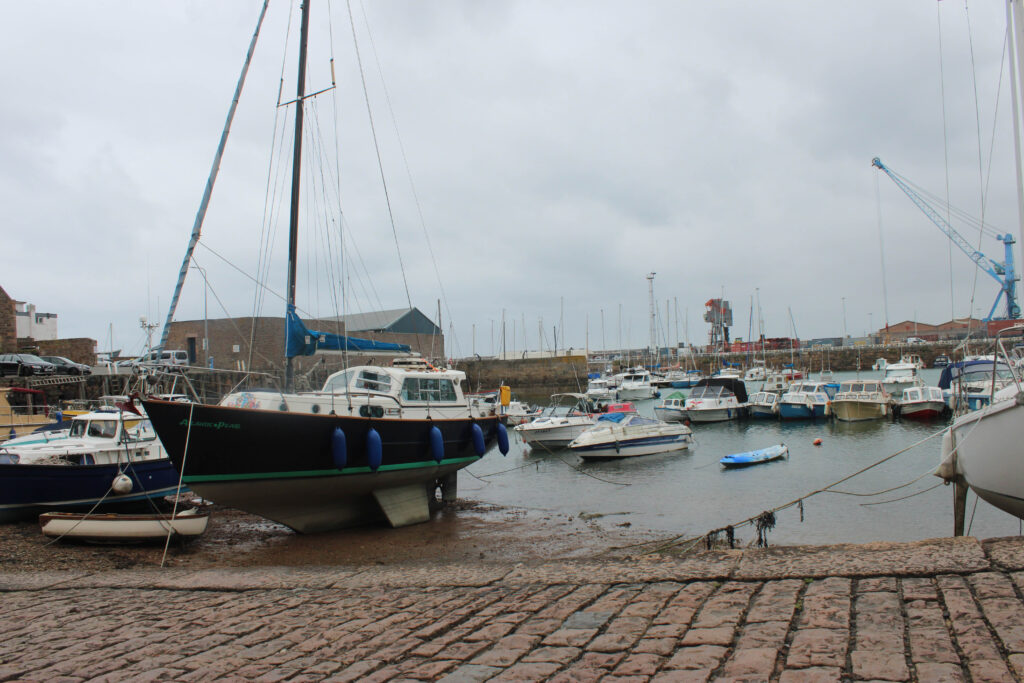
















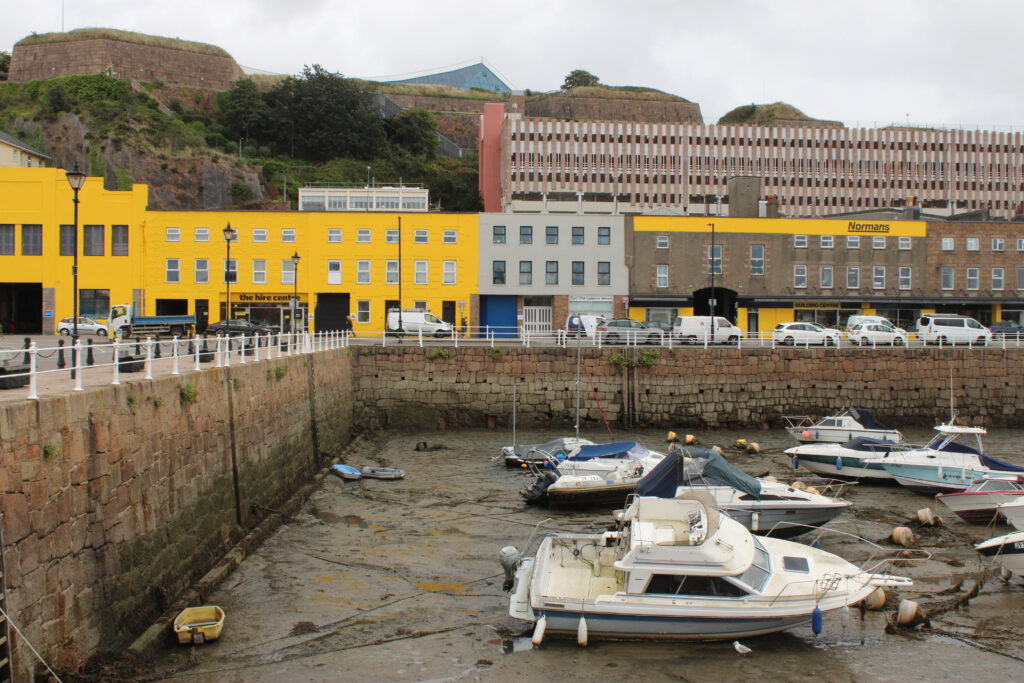










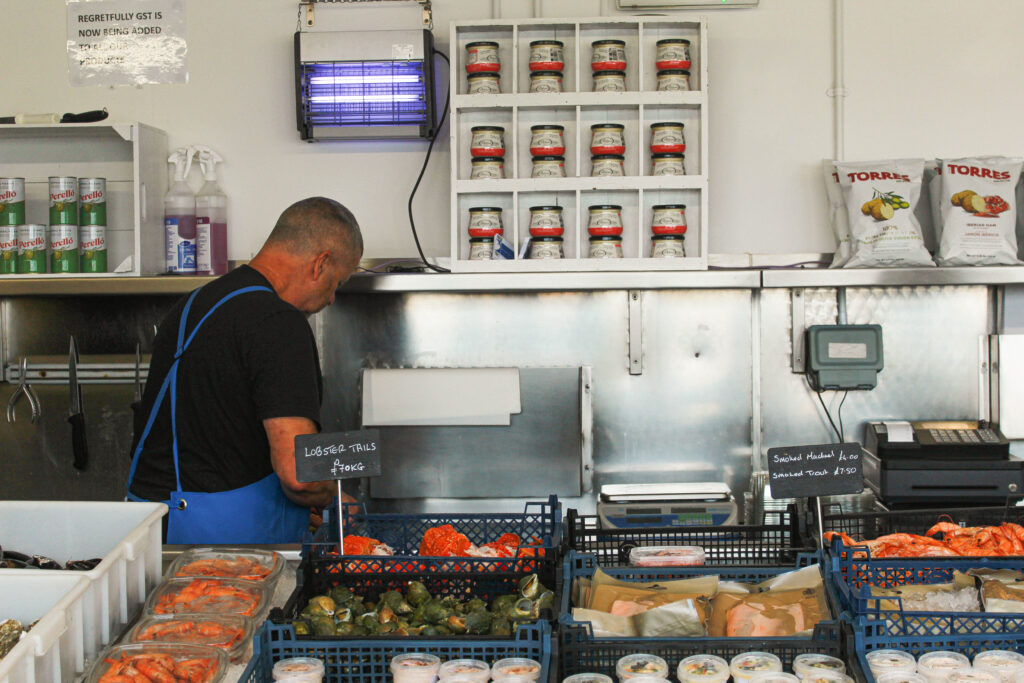




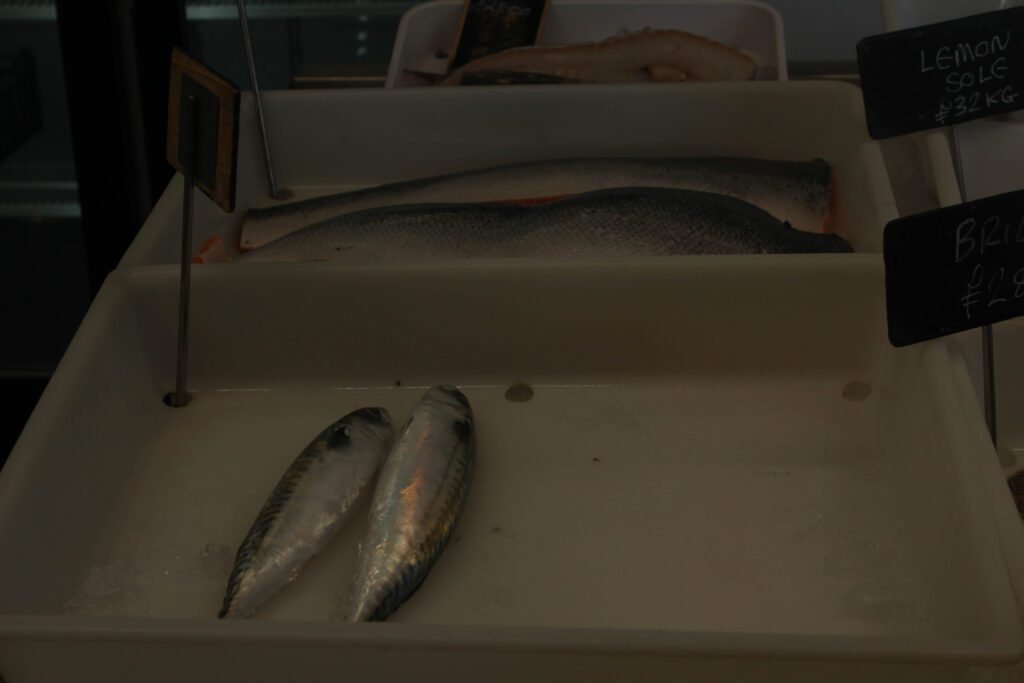














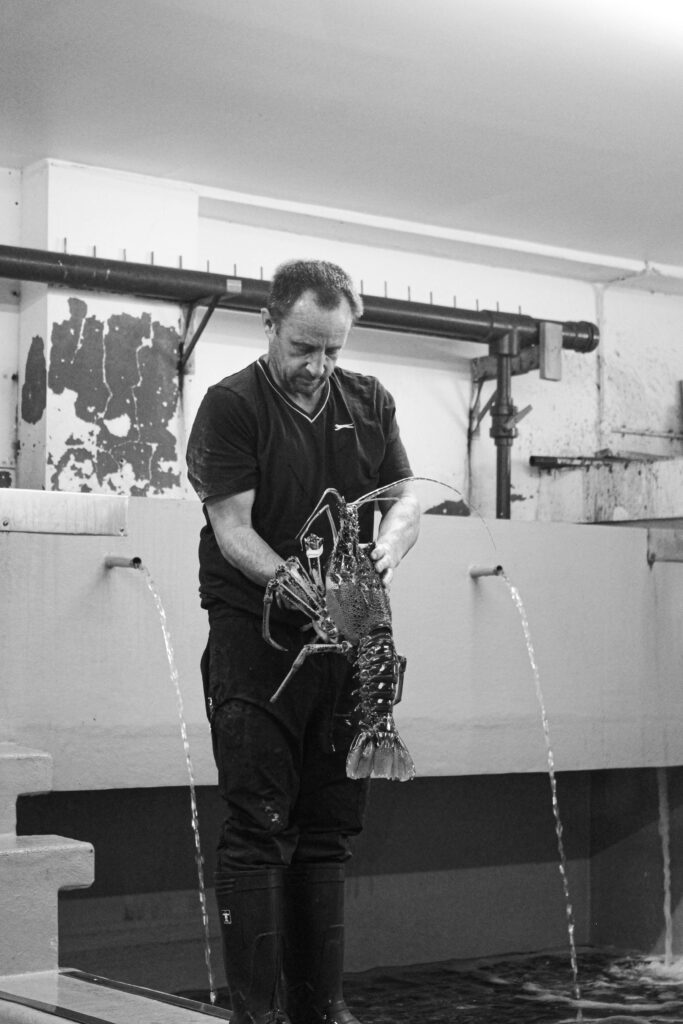










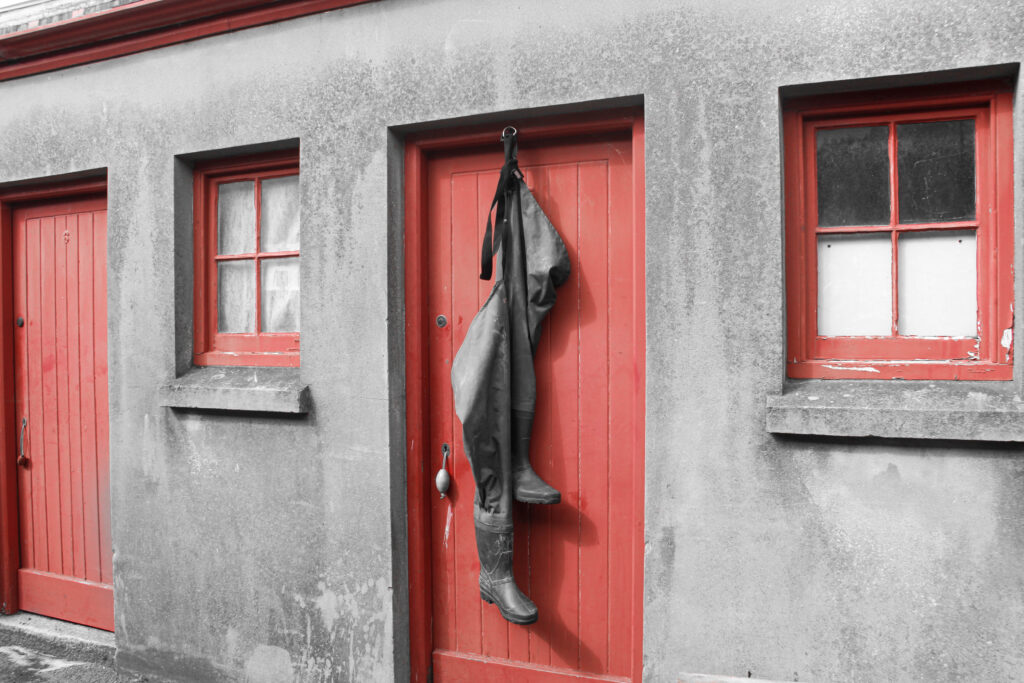




STORY: What is your story?
Sea – Shellfish – Sold
Fisherman go out to sea and catch shellfish that is then brought back to land and sold.
The fisherman drive down to the harbour, going past the towering steam clock, down to the pier. Rummaging through the equipment and going through the daily checks. Making sure that there is a first aid kit and fire extinguisher on board and reporting back to the coxswain. As the engine rumbles to a start, they radio in through the VHS, coast guard give the ok that they are aware of their leave. The vessel chugs out of the port and around the dolphin, headed to towards their destination. The salt water pricks at their faces, wave after wave breaking against the hull. Throwing her into neutral and rushing to the side. They hook a buoy, hoisting it up to grab on to slimy rope, the sea tugging to reclaim its kin. Emptying the pots, listening to the shells clack and clash, securing them for the trip back, accompanied by the smell of oil and fish the trip back long anticipated, sore backs and hands desperate for some relief, though relief was a far long dream. Tanks filled with creatures, claws bound ready for slaughter, to be sold. The drive home is tiering and filled with the dread of the doing it all again another day.
The chosen photos





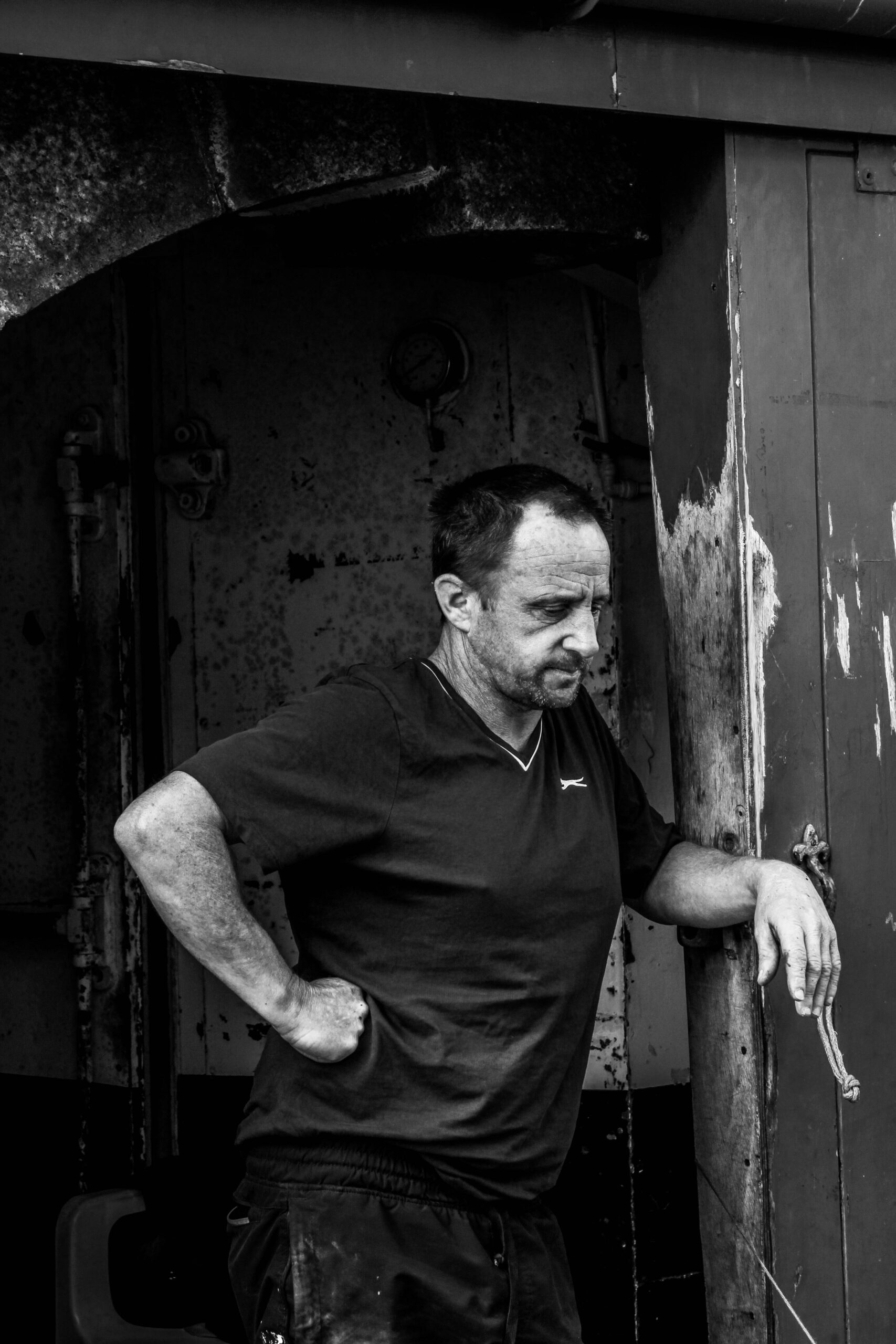





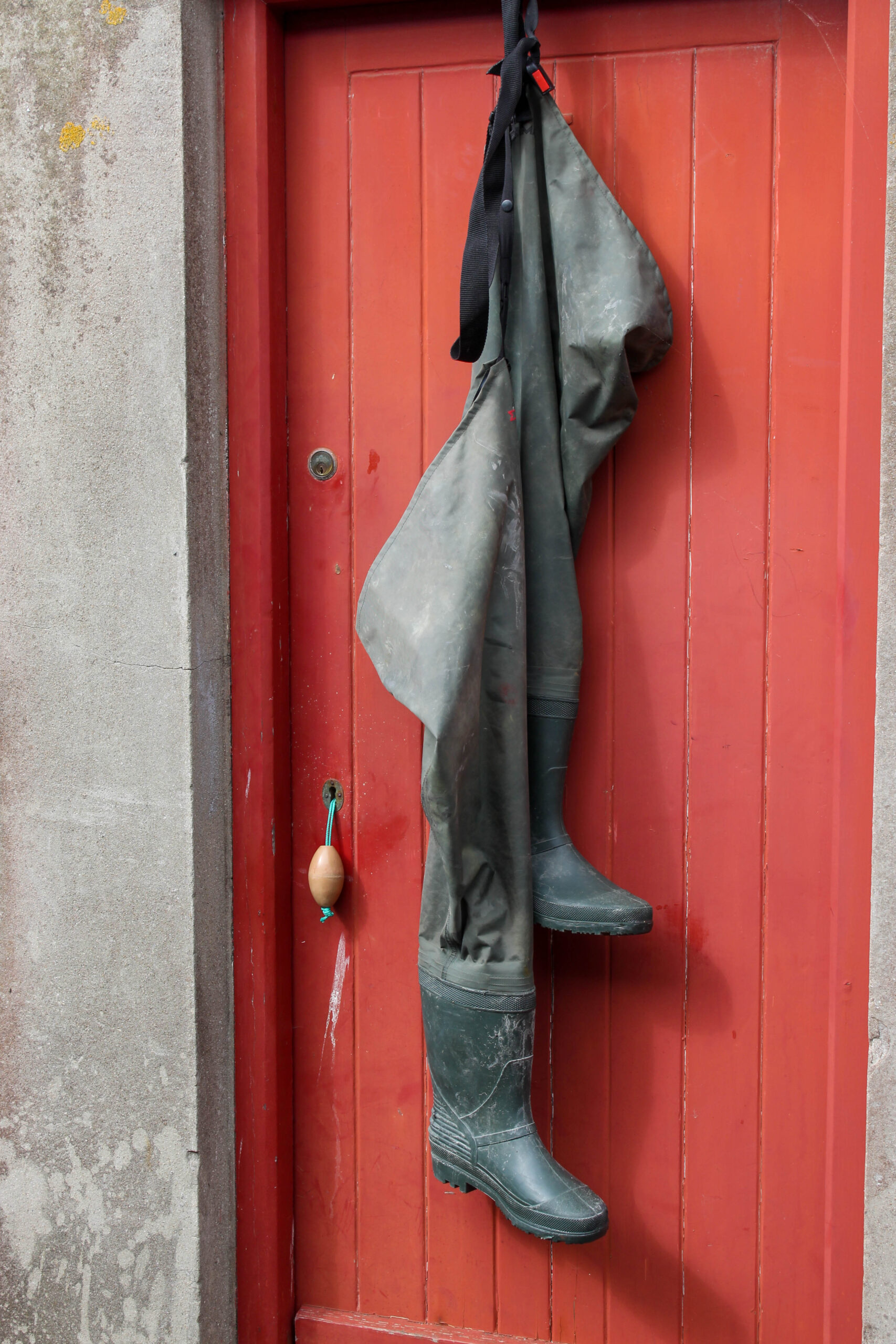



Photography was invented by Frenchman Nicéphore Niépce in 1822. Niépce developed a technique called heliography, which he used to create the world’s oldest surviving photograph, View from the Window at Le Gras (1827). Heliography was conceived in response to camera obscura theories dating back to ancient history.

The camera obscura or pinhole image is a natural optical phenomenon. Early known descriptions are found in the Chinese Mozi writings (circa 500 BCE) and the Aristotelian Problems (circa 300 BCE – 600 CE). A diagram depicting Ibn al-Haytham’s observations of light’s behaviour through a pinhole Early pinhole camera.
A pinhole lensless camera is a light-tight box with a very fine round hole in one end and film or photographic paper in the other. Light passes through the hole; an image is formed in the camera.

The first picture of a pinhole camera obscura is a drawing by Gemma Frisus’ De Radio, an astronomer. He used the pinhole in his darkened room to study the solar eclipse of 1544.
The image-forming ability of a tiny hole is thought to have been known thousands of years ago by nomadic tribes of North Africa, who lived in animal skin tents. A pinhole in the tent would project an image of the brilliant scene outside.
Leonardo da Vinci in the 16th century gave a clear description in his notebooks: “When the images of illuminated objects pass through a small round hole into a very dark room…you will see on paper all those objects in their natural shapes and colours.”

Drawing by Brook Taylor. Leonardo da Vinci gave a clear description of the Camera Obscura in the 16th century.
What is the difference between a pinhole camera and a camera obscura?
A camera obscura without a lens but with a very small hole is sometimes referred to as a pinhole camera, although this more often refers to simple (homemade) no lens cameras where photographic film or photographic paper is used.
What is camera obscura in photography?
A camera obscura, or a pinhole camera, is a simple device that is often thought of as a precursor to the modern camera. The camera obscura, Latin for “dark chamber”, consists of a dark chamber or box with a small hole in one of the four walls (or the ceiling).
What is the pinhole method of photography?
Pinhole photography uses the most basic concepts of a camera. A lightproof box, an aperture, and light-sensitive material. Light is passed through the pinhole to project an inverted image onto the paper or film on the opposite end of the camera. The distance between the pinhole and film determines the angle of view.
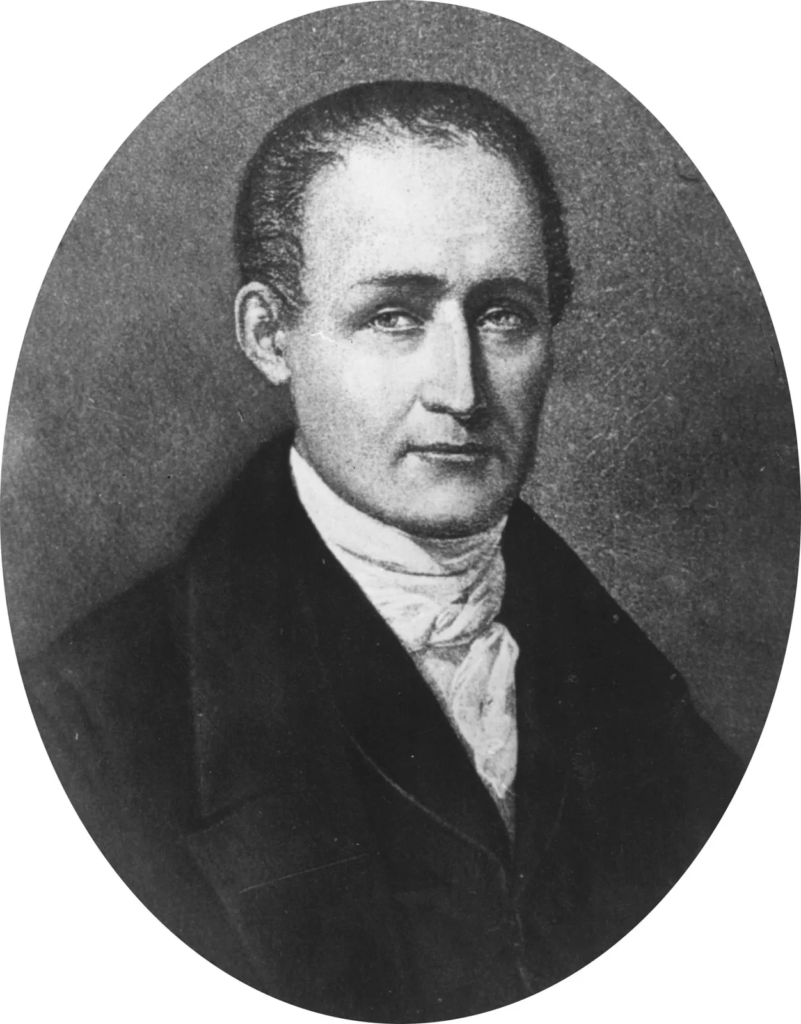
What was Joseph Nicéphore Niépce development of photography?
Niépce called his process heliography, from the Greek helios meaning ‘drawing with the sun’. In 1826, using this process, Niépce took the earliest surviving ‘photograph’—a view from a window of his house in Chalons-sur-Saône which required an exposure of about 8 hours! Nicéphore Niépce called this first image a ‘heliograph’, literally ‘sun writing’ or ‘work of the sun. ‘ Announcing the principles of his method came with tangible accomplishments. To make the heliograph, Niépce dissolved light-sensitive bitumen in oil of lavender and applied a thin coating over a polished pewter plate. He inserted the plate into a camera obscura and positioned it near a window in his second-story workroom. After several days of exposure to sunlight, the plate yielded an impression of the courtyard, outbuildings, and trees outside. Writing about his process in December 1827, Niépce acknowledged that it required further improvements, but was nevertheless “the first uncertain step in a completely new direction.”
What is heliography used for?
Heliography from helios, meaning “sun”, is the photographic process invented, and named thus, by Joseph Nicéphore Niépce around 1822, which he used to make the earliest known surviving photograph from nature. The Niépce Heliograph passed through a chain of private hands in Britain in the nineteenth and twentieth centuries before it was purchased by the Harry Ransom Center in 1963 as part of the Gernsheim Collection. More than twenty of Niépce’s heliographic plates and prints made between 1825 and 1829 are held in public and private collections, yet the Niépce Heliograph is the only known surviving point de vue.
How does a heliograph work?
The heliograph was the invention of a British engineer who attached a mirror to surveying equipment in order to redirect a beam of light on distant points. Through the use of sunlight, mirrors, and a keying system to interrupt the signal, flashes could be thrown on and off a receiving station.
What did Louis Daguerre discover?
Louis Daguerre (born November 18, 1787, Cormeilles, near Paris, France, died July 10, 1851, Bry-sur-Marne) was a French painter and physicist who invented the first practical process of photography, known as the daguerreotype.
What was the daguerreotype and why was it significant?
The daguerreotype process made it possible to capture the image seen inside a camera obscura and preserve it as an object. It was the first practical photographic process and ushered in a new age of pictorial possibility. The process was invented in 1837 by Louis Jacques Mandé Daguerre (1787–1851).
What was the daguerreotype and why was it significant?

The daguerreotype process produces a highly detailed, unique object. It is a direct-positive process, meaning no negative is made. To make a daguerreotype, a sheet of copper is plated with a thin coat of silver. This plate is then cleaned and polished to a mirror finish. Next, it is sensitised in a lighttight box with iodine and bromine vapours until its surface turns yellow. The reaction between the iodine vapor and the silver coating produces light-sensitive silver iodide.
What did Henry Fox Talbot discover?
Henry Fox Talbot was credited as the British inventor of photography. In 1834 he discovered how to make and fix images through the action of light and chemistry on paper. These ‘negatives’ could be used to make multiple prints and this process revolutionised image making.

Talbot’s major invention, resulting from his experiments, was called the ‘calotype’ sometimes referred to as the ‘talbotype’. This technique creates a paper-based photographic print using a paper negative. The positive-negative process allows many positive prints to be made of the same image, as the negative can be printed multiple times. The earliest surviving negative is one by Talbot depicting the lattice window at Lacock Abbey, made in August 1835.
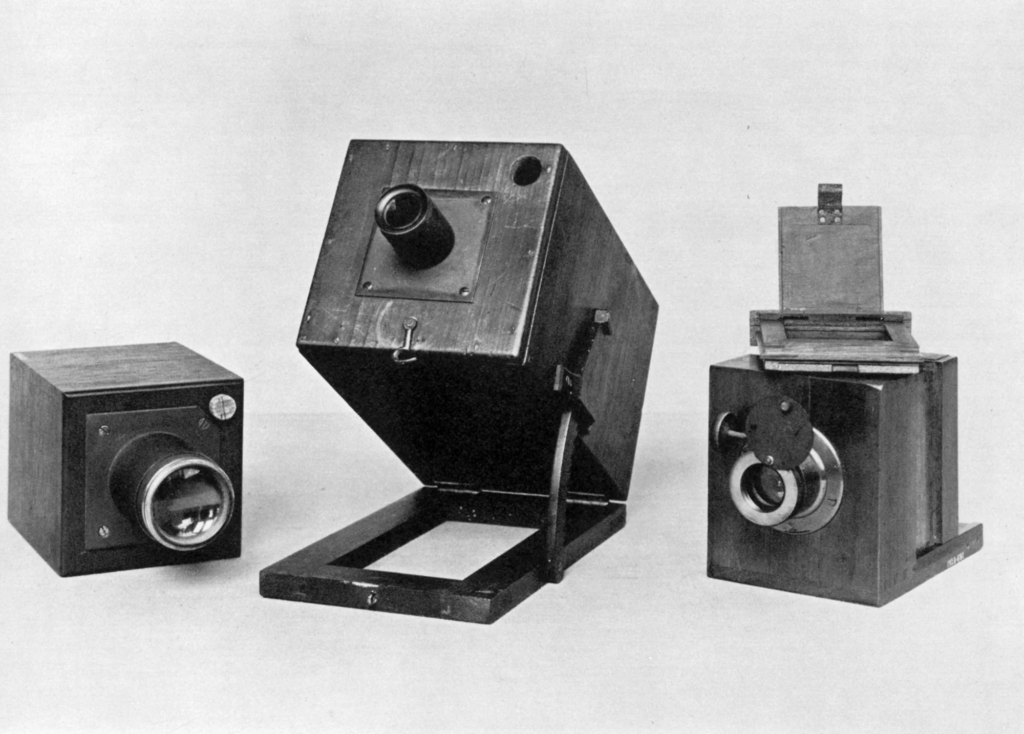
What is the difference between calotype and daguerreotype?
The main difference between the daguerreotype process and Talbot’s calotype process was reproducibility. The calotype process first produced a photographic ‘negative’ in the camera, from which many ‘positive’ calotype prints could be made, whereas daguerreotypes were a one-off image.
What is the difference between calotype and daguerreotype?
The main difference between the daguerreotype process and Talbot’s calotype process was reproducibility. The calotype process first produced a photographic ‘negative’ in the camera, from which many ‘positive’ calotype prints could be made, whereas daguerreotypes were a one-off image.
What was the world’s first selfie a self-portrait taken by Cornelius in 1839?
Setting up his camera at the back of the family store in Philadelphia, Cornelius took the image by removing the lens cap and then running into frame where he sat for a minute before covering up the lens again. On the back of the image he wrote “The first light Picture ever taken. 1839.”
What is Robert Cornelius best known for?
He operated some of the earliest photography studios in the United States between 1840 and 1842 and implemented innovative techniques to significantly reduce the exposure time required for portraits. Philadelphia, Pennsylvania, U.S. Philadelphia, Pennsylvania, U.S. He was an inventor, businessman and lamp manufacturer.
What is the theme of the self-portrait?
The self-portrait as we know it today focuses on the artist themselves, often with eyes fixed on the viewer. It’s a bold art form, requiring the artist to examine themselves as a subject and to situate their body in the canon. The self-portrait can be a practice of therapy, self-discovery, or personal myth-making.
In late September 1839, soon after the daguerreotype was publicized, Joseph Saxton took a picture of the Philadelphia Central High School, which is considered one of the oldest photographs taken in the United States. Soon after, Saxton approached Cornelius in order to receive better daguerreotype plates. It was this meeting that sparked Cornelius’s interest in photography.
What genre of photography is Julia Margaret Cameron known for?

Julia Margaret Cameron is known for painterly photographic portraits of some of the most celebrated figures in Victorian England and for staged allegorical images drawn from poetry, literature, and the Bible.
Julia Margaret Cameron was 48 when she received her first camera, a gift from her daughter and son-in-law. . Before then, Cameron had compiled albums and experimented with printing photographs from negatives. On one occasion she printed a negative by the pioneering Swedish art photographer O.G. Rejlander, surrounding the portrait with ferns to create a photogram frame – a combination of an image made in a camera and a camera-less technique. It shows Cameron’s experimental nature and provides a glimpse of her photographic practice before she acquired a camera of her own.
When Cameron took up photography, it involved hard physical work using potentially hazardous materials. The wooden camera, which sat on a tripod, was large and cumbersome. She used the most common process at the time, producing albumen prints from wet collodion glass negatives. The process required a glass plate (approximately 12 x 10 inch) to be coated with photosensitive chemicals in a darkroom and exposed in the camera when still damp. The glass negative was then returned to the darkroom to be developed, washed and varnished. Prints were made by placing the negative directly on to sensitised photographic paper and exposing it to sunlight.
Each step of the process offered room for mistakes: the fragile glass plate had to be perfectly clean to start with and kept free from dust throughout; it needed to be evenly coated and submerged at various stages; the chemical solutions had to be correctly and freshly prepared.
What is the history of carte-de-visite art?
Carte-de-visite, originally, a calling card, especially one with a photographic portrait mounted on it. It was immensely popular in the mid-19th century, the carte-de-visite was touted by the Parisian portrait photographer André-Adolphe-Eugène Disdéri, who patented the method in 1854.
‘Carte de visite’ translates from the French as ‘visiting card’ or ‘calling card’, It was first used in France by Louis Dodero, though it was subsequently patented by Adolphe Eugene Disderi in 1854.
Primarily, they were albumen prints, usually portraits and were mounted on thick card to stop the image being creased. The card usually measured 64mm (2.5 inches) by 100mm (4 inches). The actual photograph varied in size depending on the photographer.
The story goes that this method of mounting a photograph on a calling card seemed a bit vulgar and was slow to gain acceptance, but they really took off when Disderi published and marketed Napoleon III image as a CDV in 1859 and the ‘well to do’ naturally followed suit. Queen Victoria was also a devotee and her patronage also increased its awakening to the general public.
Henry Mullins was by far the most prolific of the first generation of Jersey photographers in the mid-nineteenth century. He produced thousands of portraits of islanders between 1848 and 1873 at his highly successful studio in the prime location of the Royal Square, St Helier.
As a commercial photographer he consistently embraced the rapid technical progress that ran in parallel with his career. While numerous photographic studios opened across the town of St Helier in the 1850s and 1860s, Henry Mullins continued to be the photographer of choice for leading members of Jersey society and successful local and immigrant families. Mullins’s productivity was matched by the technical standard of his work; qualities that are exemplified in the richness of the portraits of Victorian islanders preserved on the pages of his photograph albums.
Richard Maddox

In England, 1871, Dr Richard Maddox, a physician suggested that sensitising chemicals, calcium bromide and silver nitrate, should be coated on a glass plate in gelatin. From this suggestion, Charles Bennett, made the first gelatin dry plates for sale, soon after the emulsion of these chemicals could then be placed onto celluloid roll film.
These lightweight, gelatin negative plates revolutionised photography at the time. Through a commercial market these dry plates bought off a shelf, saved photographers from having to prepare their own emulsions in a dark room, instead these didn’t have to developed straight away and could be stored for later development. His work also would later go onto the construction of small enough, hand-held cameras.
Because of Richard Leach Maddox, M.D., photography was given an early impetus to become a disseminator of medical knowledge. His interest in the camera, combined with his poor health and his medical training, enabled him to invent the gelatin bromide negative that is the backbone of today’s photographic film.
Born in Bath, England, in 1816, Maddox studied medicine at University College, London. For unknown reasons, he took his degree at Edinburgh. Ill-health from early childhood prompted a voyage around the world before he settled in Constantinople, where he married and practiced medicine for some years.
What did Dr Richard Maddox create that allowed photographers?
Dr. Richard Maddox created a dry plate technique that allowed photographers to develop photographs without using the wet methods of the collodion process. This technique involved using gelatin instead of glass to make photographic negatives.


Born in New York, Eastman was an American entrepreneur and inventor who developed the first Kodak Camera. In the lead up to this his contributions can be seen beginning in 1880 when he perfected the process of making dry plates for photography, a process first made by Richard Maddox. Operating in London, he manufactured these dry plates from a factory and established the Eastman Dry Plate and Film Company. Applying the perfected process of the dry plates onto film, Eastman was able to make the first ‘Kodak’, which in 1888 he placed on the market.
In 1889, George Eastman and his company made their largest contribution to Photography with the introduction of roll film. Produced on a transparent base, this has since remained standard for film.
Why did George Eastman invent the camera?
George Eastman invented the camera and related innovations after he realized that existing photographic equipment was extremely cumbersome. In 1880, he made his first innovation to improve upon these technologies when he perfected the dry-plate technique.

The Kodak “Brownie” camera made its debut at the turn of the twentieth century and sold for one dollar. One hundred thousand of them were purchased during the first year alone. The Brownie helped to put photography into the hands of amateurs and allowed the middle class to take their own “snapshots” as well.
Eastman Kodak introduced the new Brownie dollar box camera in 1900; the release was supported by a major advertising campaign. The name “Brownie” was chosen primarily because of the popularity of a children’s book of cartoons of the same name, and partly because the camera was initially manufactured for Eastman by Frank Brownell of Rochester, New York.
With Kodak’s developments with photography one of their most important inventions, ‘The Brownie’, created to take images easily and quickly, allowed for amateurs within photography take their own ‘snapshots’. Due to the nature of photography being quite costly it was useful reserved for those of a higher class, however this let the middle class into the art too. Invented in 1900, its marketing was highly popular and saw their ownership on a massive scale.
What is considered film photography?
During film photography, a roll of light-sensitive film is placed within the camera. When the shutter of the camera is open, the film is exposed to light and an impression is captured. After the exposure is made, the photographer rolls the film forward so a fresh section of unexposed film is ready for the next photo.
What is film style photography?
Cinematic photography is a style of photography that emulates stills or frames from movie scenes. It is a highly effective storytelling technique that can create images with depth and feeling.
There are still quite a few professional photographers using film, again, often in addition to digital photography.
Digital photography is a technology that uses digital cameras to capture images. Unlike analog or film cameras, digital cameras do not use film on which to record images. Rather, digital cameras use image sensors that convert light into electric signals.
